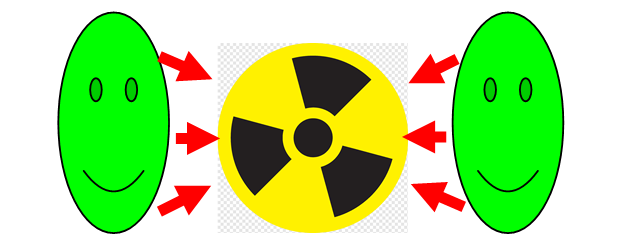Video Article Open Access
Growing Microbiological Substance as Effective System for Accelerated Deactivation of Radioactive Waste and Transmutation of Stable Isotopes
Vladimir Vysotskii1,*, Alla Kornilova2, Sergei Gaydamaka2
1Taras Shevchenko National University of Kyiv, 01601, Volodymyrska Str. 64, Ukraine
2AVSystems Inc., 54, Harpsichord TPKE, Stamford, CT, 06903, USA
Vid. Proc. Adv. Mater., Volume 3, Article ID 2208324 (2022)
DOI: 10.5185/vpoam.2022.08324
Publication Date (Web): 28 Dec 2022
Copyright © IAAM
Graphical Abstract

Abstract
In the report the prehistory, detailed theoretical justification and the results of numerous experiments on accelerated nuclear transmutation of of different stable isotopes and effective nuclear deactivation of radioactive isotopes (including reactor waste) in growing microbiological cultures are discussed. In our initial experiments (1992-2000) [1]. we have created the optimal safe biotechnology for nuclear transmutation of different light, middle-mass and heavy stable isotopes (e.g.MN55 + d = Fe57, Na23 + p31= Fe54, Cs133 + p = Ba134) in biological systems. During our later experiments (2000-2015, [1-4]) we realized the transmutation reactions in microbe syntrophiс associations (MSA) for long-lived reactor isotopes and have observed fast (accelerated by 35 times in relation to natural decay of 30 years ) transmutation of reactor Cs137 isotope to stable Ba138 isotope in Cs137 + p = Ba138 reaction. The process of deactivation is connected with accelerated nuclear transmutation of these radioactive isotopes to stable isotopes during growth and metabolism of optimal and resistant to strong radiation type of MSA. In recent years (2016-2021) further improvements in biotechnology has led to very significant progress of these processes. At the most optimal conditions and optimal MSA the decrease in Cs137 concentration over 15 days reached 70% and was accelerated by 103 times ib relation to the natural decay.
In the report, biophysical and physical aspects and mechanisms of accelerated controlled nuclear reactions in growing biological systems are discussed. It was shown that the physical mechanism of nuclear reactions in growing biological systems is connected with formation of coherent correlated states of interacting nuclear isotopes [5,6]. This process is accompanied by giant energy fluctuations (up to 10-50 keV and more) of these nuclei, which can exist for a relative long time, sufficient to produce nuclear reactions. The generation of this fluctuation happens automatically in non-stationary potential biological nano-wells, which are formed in various biophysical and biochemical
processes in growing biological objects - for example, during cell division, at DNA replication, at the entrance to ion channels in cellular plasma membranes and in other places of growing biological objects.
These low energy nuclear processes play a very important role in ecology, marine geology, biology and medicine and can be effectively used to natural and controlled clean the environment from radioactive waste.
Keywords
Low energy nuclear reactions; nuclear reactions in biological systems; safe deactivation of radioactive waste; coherent correlated states.
References
- V.I. Vysotskii, A.A. Kornilova, Nuclear fusion and transmutation of isotopes in biological systems, Publ. House "Mir", Moscow, 2003, p302.
- V.I. Vysotskii, A.A. Kornilova, Nuclear transmutation of stable and radioactive isotopes in biological systems. Pentagon Press, India, 2010, p.187.
- V.I. Vysotskii, A.A. Kornilova, Annals of Nuclear Energy, 2013, 62, 626.
- V.I. Vysotskii, A.A. Kornilova, Current Science, 2015, 108, No.4, 636.
- V.I. Vysotskii, M.V. Vysotskyy, European Phys. Journal A, 2013, 49, 99.
- V.I. Vysotskii, S.V. Adamenko, M.V. Vysotskyy. Annals of Nuclear Energy, 2013, 62, 618.
Biography
Vladimir I. Vysotskii is Professor of Radiophysical Faculty and Head of Mathematics and Theoretical Radiophysics Department at Kiev National Shevchenko University (modern name is Taras Shevchenko National University of Kyiv), Ukraine. He received his Master degree (Quantum Radiophysics) from Kiev National Shevchenko University, Radiophysical Faculty in 1969. He has received Ph.D. (Theoretical Physics) from Kiev Institute of Theoretical physics of Ukrainian Academy of Science in 1975. Since 1976 V. I. Vysotskii was employed as a senior scientific researcher, since 1979 - as an associate professor of Radiophysical Faculty of Kiev National Shevchenko University, since 1993 - as full professor at the same university. He has also received the additional Doctor Habilitus degree in Theoretical Physics and Solid-State Physics (degree of Doctor of Sciences) from Kiev National Shevchenko University in 1992.
Since 2006 he is Head of Theoretical Radiophysics Department at Radiophysical Faculty of Kiev National Shevchenko Universit (since 2017 this Faculty has the name the Faculty of Radiophysics, Electronics and Computer Systems (FRECS)). He is reading several courses of lectures for students of FRECS: quantum mechanics; nuclear physics and astrophysics; short-wave laser physics, molecular biology, radiobiology. He is the official Honored Worker of Science and Technology of Ukraine. He is also an active member of many international and national physical, nuclear and biophysical societies (USA, Ukraine, Russia, Denmark, Georgia, etc.). During the whole period of work at Kiev National Shevchenko University V. I. Vysotskii has performed investigations on several main topics:: modern problems of astrophysics (collapse of electron-nuclear plasma in the Laboratory and the Universe; origin of cosmic rays; birth of proton-electron stars): low-energy nuclear reactions; gamma-ray lasers; controlled nuclear decay; modern problems of radiobiology and biophysics, modern problems of thermodynamics of fast processes etc. He is a head of scientific groups on these problems.
Prof. Vladimir Vysotskii has published about 350 articles in reputable journals and 14 scientific monographs (USA, Japan, Russia, India, Ukraine, Springer, Elsevier, World Scientific Pub.)
Video Proceedings of Advanced Materials

Upcoming Congress



